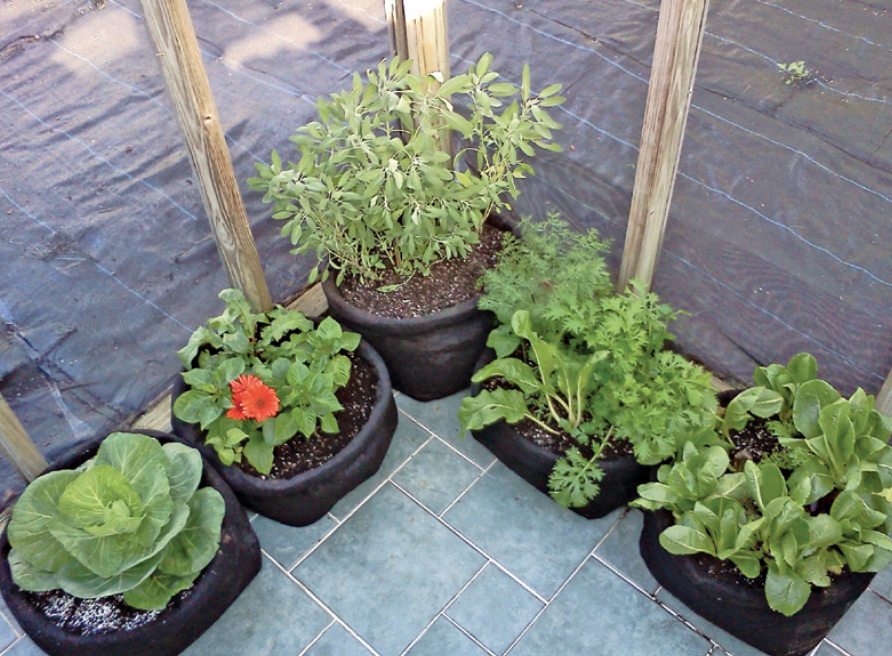A Moveable Garden: It’s in the Bag
Do you have limited areas of sunlight in your backyard? Or are you a condo dweller with a sunny terrace? Maybe the solution for your edible garden is using grow bags.
You may have seen landscape trees and palms grown in sacks rather than rigid containers. They're also handy for backyard gardeners, especially if you need to move plants around to get maximum sunshine.
Bags made of woven or nonwoven fabric have certain advantages for plants, too, according to Organic Methods for Vegetable Gardening in Florida. They don't become root bound because roots stop growing as they reach the side of the bag. Backyard gardeners can buy commercial bags, such as JackPot fabric growing containers made of UV-resistant fabric, in sizes ranging from seven gallons upward, or make their own out of high-end weed barrier cloth. Some gardeners use inexpensive reusable cloth shopping bags or recycle sacks whose handles have come apart.
"I'm a grow bag farmer," says Karin Fields, author of Organic Vegetable Gardening in the Tropics and gardening instructor at Marando Farms in Fort Lauderdale and other venues. "These 15-gallon fabric containers keep it simple. Because our soil is sandy, we are container gardeners here in Zone 10B. Using raised beds is fine, but they have a large planting area, making watering a guessing game, and they can't be moved. They're not easy on the back, either."
Fields lists other advantages of grow bags:
- They can last up to 20 years in the sun, and can be placed anywhere on any surface.
- If you're getting pest damage, you can keep the bugs guessing by simply moving the bag to another location in your yard.
- You can bring bags inside during inclement weather.
- You'll prevent over-watering because the excess water runs out of the sides and bottom, making it easier to gauge each crop's individual watering requirements.
In her book, Fields recommends filling a 15-gallon bag with 1.5-cubic feet of Black Gold Natural and Organic Potting Soil mixed with 2 cups of calcitic lime and 4 cups of rock dust or Azomite. Plant seedlings in the grow bags, water and fertilize. Add a trellis for crops like pole beans and a cage for eggplant and tomatoes.
"It's a good idea to stick with the vegetable crops that are easy to grow, and most importantly, grow what you like to eat. At this time of the year, growing greens are always the best bang for your buck. Kale, Swiss chard, collards, arugula and lettuce are easy, fast, delicious and nutritious. Herbs, broccoli and root crops like beets, carrots and turnips are easy, too," Fields says. "If you want to grow tomatoes or cucumbers, grow the little ones."
FIND OUT MORE:
Karin Fields' class schedule and book ordering information at www.ediblegardening.biz.





